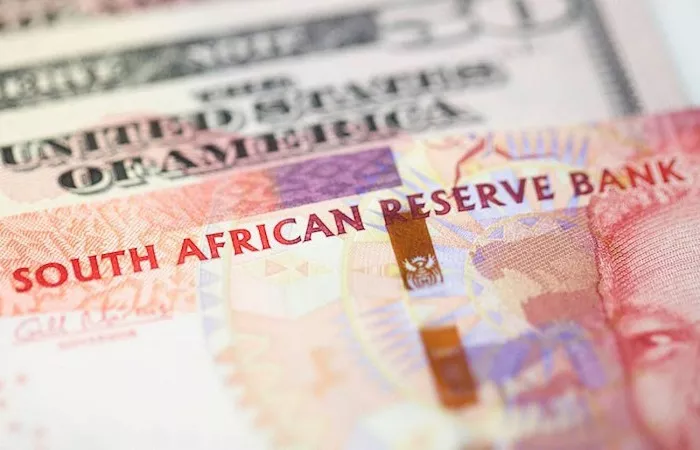On the other hand, the British Pound (GBP), often referred to as sterling, holds a long – standing reputation as one of the world’s major reserve currencies. With a history dating back centuries, it is the currency of the United Kingdom. The pound is used in daily transactions, international trade, and financial markets across the globe. The exchange rate between the rand and the pound is crucial for multiple reasons. For South African businesses engaged in trade with the UK, a favorable exchange rate can significantly impact their profit margins. Similarly, British investors looking to invest in South Africa or South Africans planning to travel to the UK need to keep a close eye on this exchange rate.
Historical Exchange Rate Movements
1960s – 1970s
In 1961, when the South African rand was first introduced, it was set at a rate of 1 rand to 0.5 pounds. However, in 1967, following the devaluation of the pound, the exchange rate adjusted to 1 pound to 1.71428 rand. In 1971, the rand was decoupled from the pound and pegged to the US dollar. Afterward, due to the depreciation of the US dollar, the rand’s gold content was reduced, leading to a series of exchange rate adjustments. In 1972, the rand was devalued and re – pegged to the US dollar, and in 1973, further adjustments were made to the exchange rate following the devaluation of the US dollar.
1980s – 1990s
During the 1980s, South Africa faced various economic and political challenges, including international sanctions. These factors led to significant fluctuations in the rand’s value. The country implemented and then abolished a dual – exchange – rate system, both of which had a substantial impact on the rand – pound exchange rate. In the 1990s, as South Africa underwent political changes and economic reforms, the exchange rate continued to be influenced by domestic and international economic developments.
2000s – Present
In recent decades, the rand – pound exchange rate has been influenced by global economic events, such as the 2008 financial crisis, as well as domestic economic factors in South Africa and the UK. South Africa’s economic growth, inflation rates, and political stability, along with the UK’s economic performance, Brexit, and monetary policy decisions, have all contributed to the fluctuations in the exchange rate.
Factors Influencing the Rand – Pound Exchange Rate
Economic Indicators
GDP Growth: A higher GDP growth rate in South Africa relative to the UK can lead to an appreciation of the rand. When South Africa’s economy is growing rapidly, it attracts more foreign investment, increasing the demand for the rand and driving up its value. Conversely, if the UK’s GDP growth outpaces South Africa’s, the pound may strengthen.
Inflation Rates: Inflation erodes the purchasing power of a currency. If South Africa experiences higher inflation than the UK, the rand is likely to depreciate. This is because goods and services in South Africa become relatively more expensive, reducing the demand for the rand. Central banks in both countries use interest rates to control inflation, and these interest rate differentials also impact the exchange rate.
Political Stability
Political stability is crucial for a stable exchange rate. In South Africa, political unrest, labor strikes, or policy uncertainties can undermine investor confidence, leading to a depreciation of the rand. Similarly, in the UK, political events such as Brexit negotiations had a significant impact on the pound’s value. The more stable the political environment in either country, the more likely the currency is to remain strong.
Monetary Policy
Central banks play a vital role in determining exchange rates through monetary policy. The South African Reserve Bank and the Bank of England use tools such as interest rate adjustments, quantitative easing, and open – market operations. When the South African Reserve Bank raises interest rates, it attracts foreign investors seeking higher returns, increasing the demand for the rand. Conversely, if the Bank of England implements expansionary monetary policies, the pound may weaken.
Commodity Prices
South Africa is a major exporter of commodities such as gold, platinum, and diamonds. Fluctuations in commodity prices can have a significant impact on the rand. When commodity prices rise, South Africa’s export revenues increase, leading to an inflow of foreign currency and an appreciation of the rand. Since the UK is not as dependent on commodity exports, changes in commodity prices generally have a more direct impact on the rand – pound exchange rate through their effect on the rand.
Conclusion
The exchange rate between the South African rand and the British pound is a dynamic and complex topic. It is influenced by a wide range of factors, including economic indicators, political stability, monetary policy, and commodity prices. Understanding this exchange rate is crucial for businesses, investors, and individuals involved in trade, investment, or travel between South Africa and the UK.As the global economic landscape continues to evolve, the rand – pound exchange rate will likely continue to fluctuate. Market participants need to stay informed about the latest economic and political developments in both countries to make informed decisions. Whether you are a South African exporter looking to maximize profits, a British investor seeking opportunities in South Africa, or a traveler planning a trip between the two countries, monitoring the rand – pound exchange rate is essential.
Related topics:
- Current USD Exchange Rate: $30 USD in Australian Dollars
- Can the Indian Rupee be Used in Thailand?
- Can the Indian Rupee Be Used in Bhutan?


